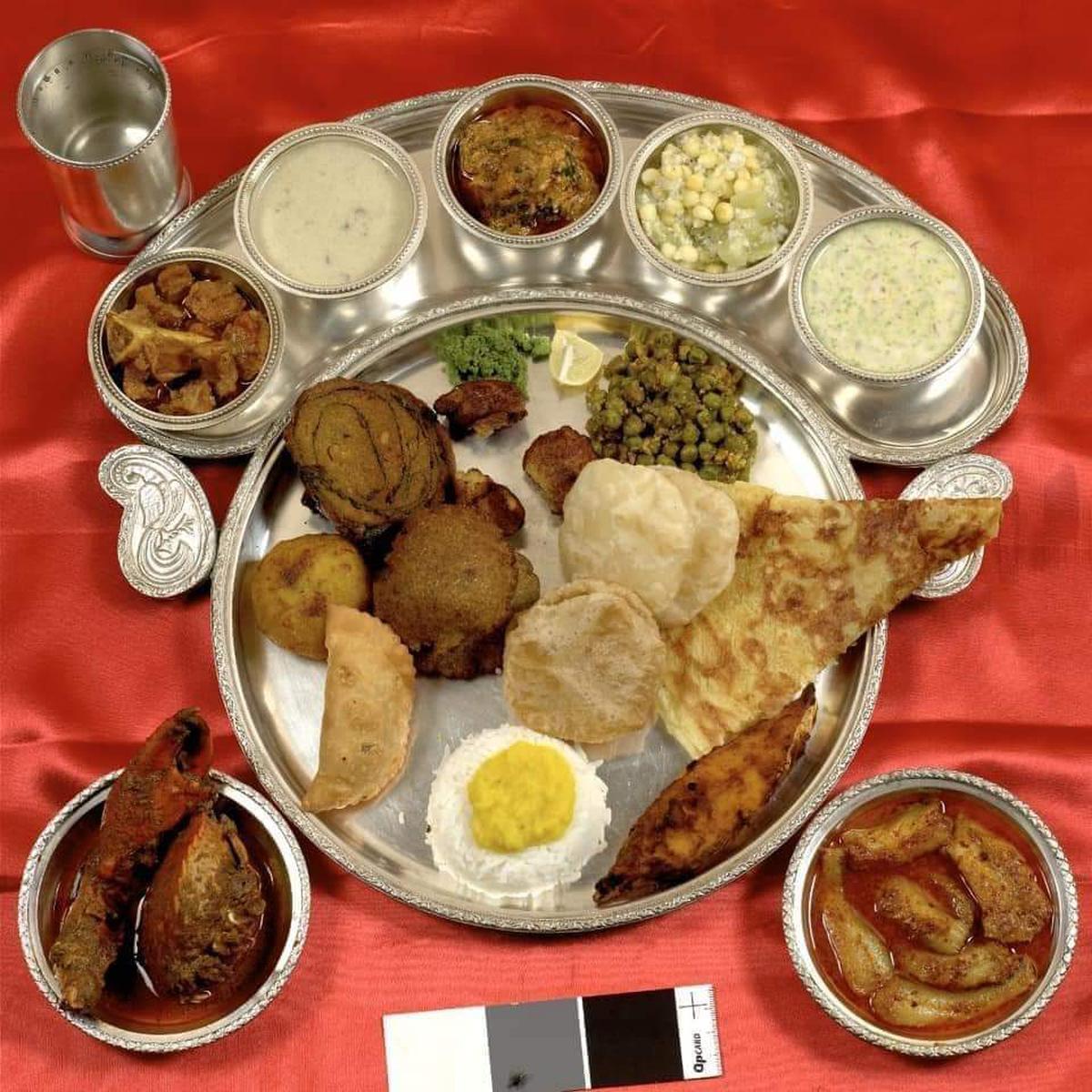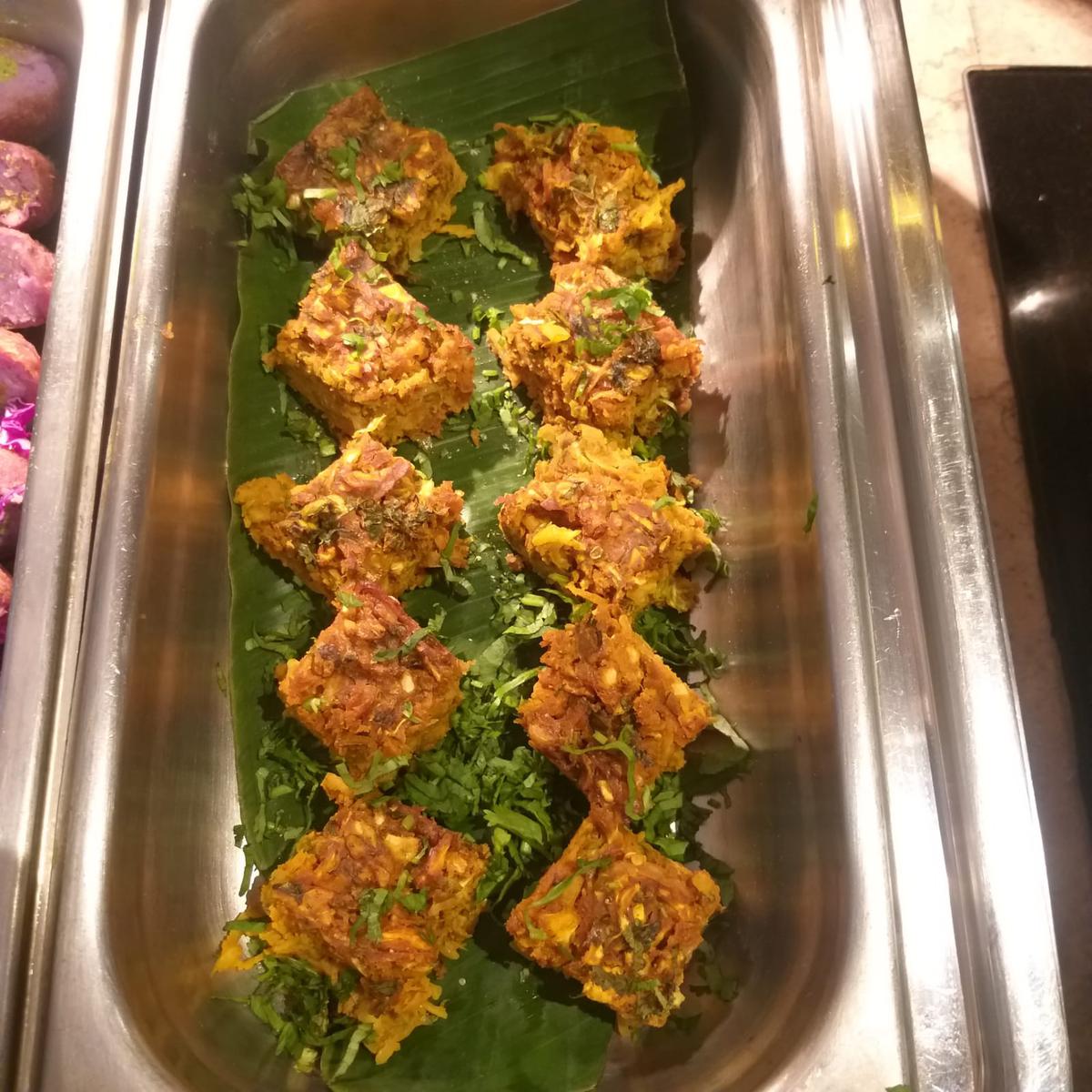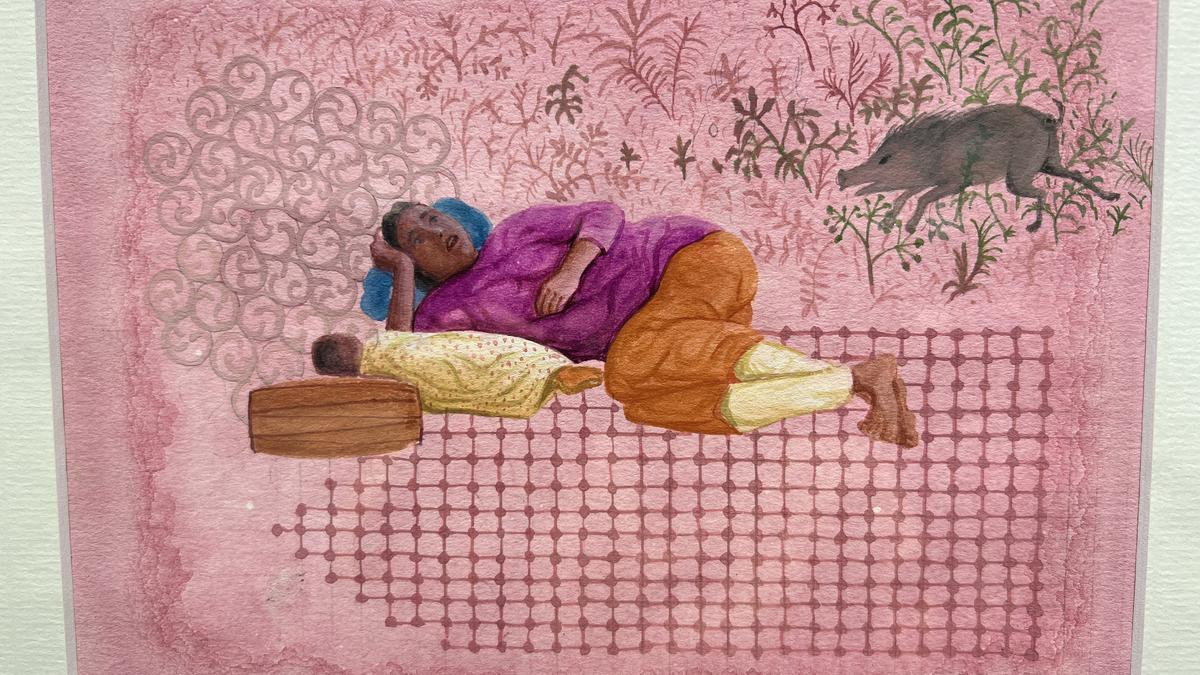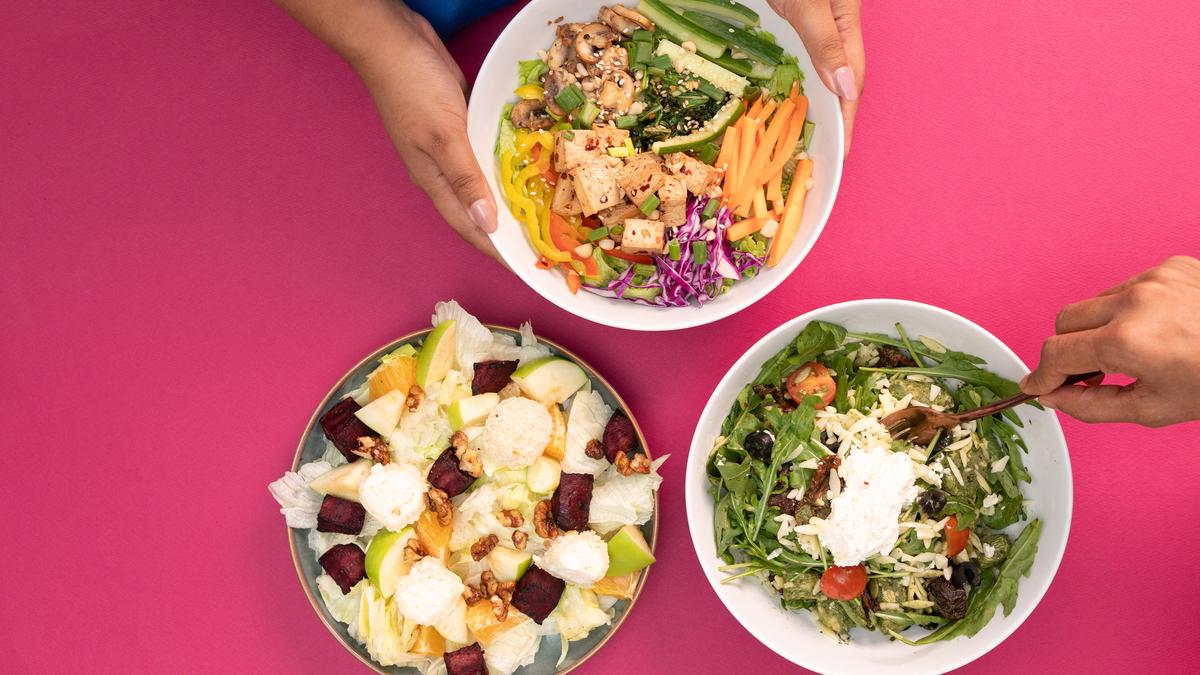Chef Bimba Nayak routinely organises pop-ups and food festivals to get the new generation interested in the food culture of the Pathare Prabhu community.
| Photo Credit: Emmanual Yogini
For Bimba Nayak, one of the greatest ‘gifts’ her parents could bestow on her 70 years ago is her rather unique name. A shortened version of pratibimba or reflection, Nayak feels her name serves as a constant reminder of her position in Maharashtra’s Pathare Prabhu micro community. It’s one she strives daily to uphold via the food she cooks, curates and promotes as a “culinary emissary” of this close-knit community.
Having shaped her culinary oeuvre as a little girl — standing on a stool observing her maternal grandmother whip up dishes like kolambi khadkhadle (a spicy prawn curry), chawli-vangi bhaji (black-eyed peas and brinjal stir-fry) and bhendi-vatanachi bhaji (ladiesfinger and green peas stir-fry) — Nayak has over six decades of cooking experience under her belt. And she puts it to good use in her capacity as a chef, educator and chronicler of all things Pathare Prabhu.

A typical Pathare Prabhu thali meal.
| Photo Credit:
Courtesy Bimba Nayak
“I feel that attempts like the various pop-ups and food festivals that I curate along with the annual Pathare Prabhu fair are my ways of getting the new generation in the community to appreciate their heritage via food,” says Nayak. “I even attempted to write a cookery book with over 300 almost-lost recipes that I sourced from ajjis [grandmothers] across Mumbai. You know, the kind that featured old-fashioned measurements like tipris and pairis that are difficult to translate into metric or imperial systems. Sadly, a bug in my computer put a kibosh on that plan and I lost everything I had compiled for years. But I’m not giving up just yet.”
Although she is yet to hitch a ride on the YouTube and social media bandwagon, Nayak admits the medium has been a gamechanger for other micro communities in getting their recipes and cooking nuances out there.
Bimba Nayak with Christmas-special treats at her kitchen in Mumbai.
| Photo Credit:
Emmanual Yogini
Not one to shy away from attributing the origins of the Pathare Prabhu cuisine to the nomadic ways of her ancestors, Nayak talks about interesting culinary chimeras like the 27-spice blend called Prabhu sambhar powder that’s very different from the South Indian ones. It was while researching the Silk Route-origins of this spice blend that she discovered the use of thickening agents such as chana dal and wheat flour. The two rather unusual ingredients add heft to the dish, she says.
“We also have our own versions of dishes such as ghevar from Rajashthan and the winter special, brinjal-based stew of undhiyu from Gujarat. To the latter and other vegetarian dishes like poha, upma and even karanjis and aloo wadi, we add minced prawns or ghol fish or even mutton. We call this iteration of undhiyu, ghada, as it is cooked underground in an earthen pot called a ghada, along with bits of spine gourd,” says Nayak, who serves the dish with the Rajasthan-influenced churma ladu and the Gujarati tel poli or oil bread.

‘Bhanavle’, a savoury cabbage ‘cake’ spiced with cinnamon.
| Photo Credit:
Courtesy Bimba Nayak
Speaking of bread, Nayak elaborates on the Pathare Prabhu community’s love for baking. “We love our baked goods, especially Pathare Prabhu pav which is a homemade summertime bun made with yeast that’s derived from dal, milk and water. This is always had with aamras (mango pulp),” she says. There are also other baked dishes such as the savoury cabbage ‘cake’ spiced with cinnamon, called bhanavle, and kheema pie that is an adaptation of the shepherd’s pie.
Rushing to put the finishing touches to her latest Pathare Prabhu food festival at a nearby hotel, Nayak leaves us with a truism that she says defines her as a senior member of her community. “I don’t believe food should be made and served from the heart,” she says. “It should be made with every fibre of one’s being. The pleasure of cooking for and feeding someone is an unparalleled one. It is something that forms the very core of my existence.”
“Get rid of excess fat from stocks, gravies and sauces by skimming an ice cube along the surface of the liquid with a spoon. This will cause the fat to rise and solidify. Then scoop it out with a spoon or a piece of toast”Bimba Nayak
The Mumbai-based writer is passionate about food, travel and luxury, not necessarily in that order.






